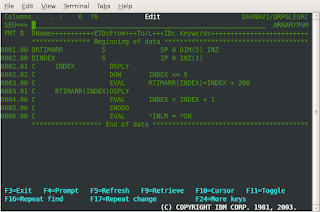If the programmer is using SETLL and READE to get a single record you could change the program to CHAIN and get quicker results. The SETLL and READE is good only for situations where you need to read a group of records with the same propertie
The below program is for fetching Employee Name and Employee Salary based on the Employee Number Entered through the screen.
Based on the input ( Employee Nmber - EMPIDS ) the CHAIN opcode will directly point to the record . READE will read that records and passing the values to Screen variables ... quite easy and simple.

I will publish the SETLL program in the next------------------------------





